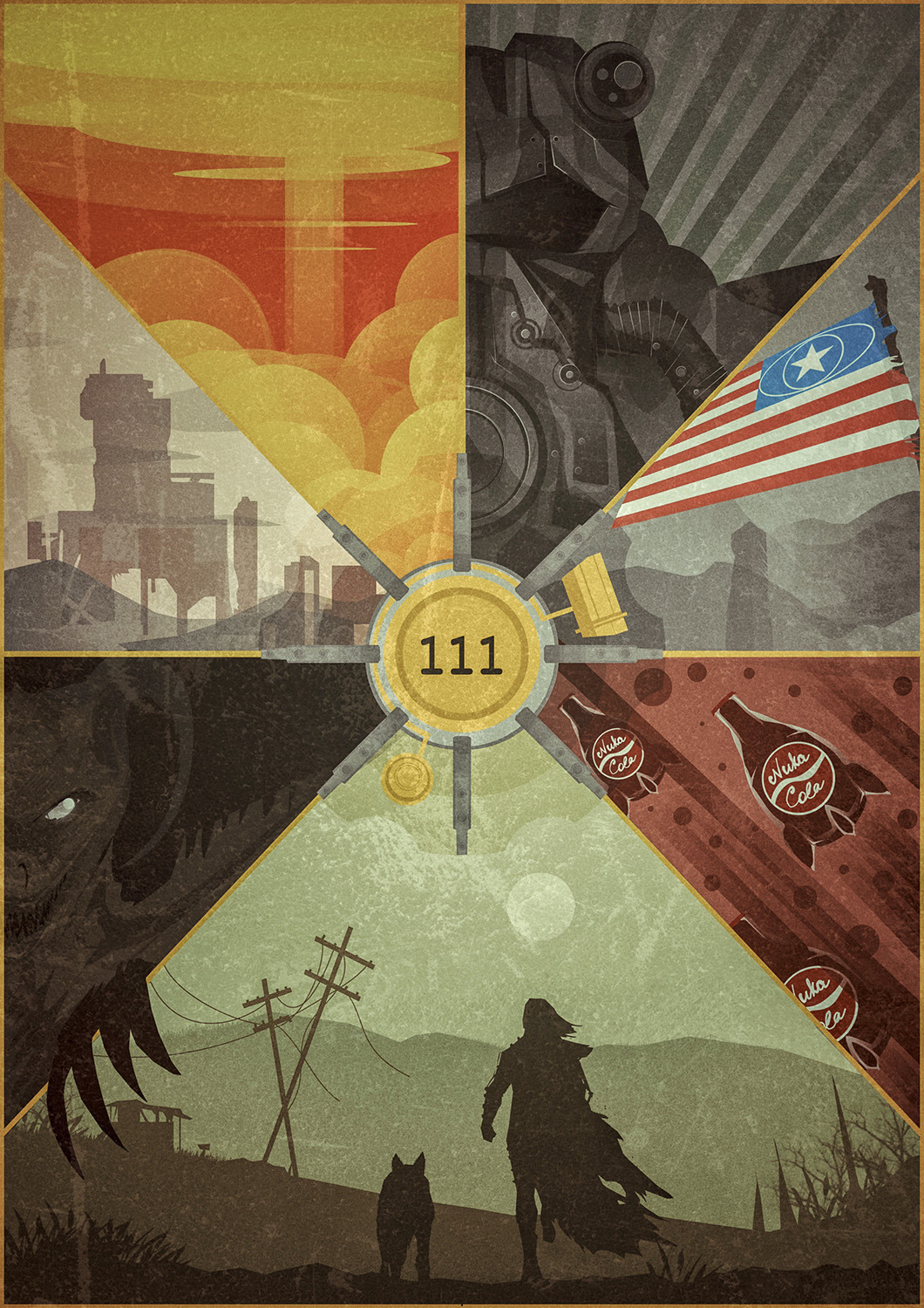"War Never Changes" Fallout 4 Poster by Lazare Gvimradze
Prints available for purchase from RedBubble. US$6.16
30 Years of NES, 30 Interesting NES Facts.
Amsel von Spreckelsen considers Bioshock as “temperance fiction” for Medium.
At First-Person Scholar, Brian Crimmins takes a look at Phantasy Star II’s dungeon and town layouts as narrative devices.
Gamasutra's Deanna Van Buren writes about Designing Architecture in Video Games for Impact, to which Robert What responds that he would like to see more games consider the ideology of Architecture.
Gregory Avery-Weir weighs in on issues of Theft, Murder, and Morals in Skyrim, pointing out that, because the thieves and thugs of Riften are are "essential" to the game, the town's crime rate will never fall.
At the Guardian, Keith Stuart argues that games aren’t about power, but about agency, which is a sentiment that I would like to see more often in game criticism.
In the spirit of the Halloween season, Thomas McMullan recently wrote three articles about horror: Alien Isolation, internal fears, and an interview with Jordan Thomas.
Kotaku's Chris Suellentrop looks back at the hype of Spore and compares it to the hype of No Man’s Sky that promises a similar gaming revolution.
Leigh Alexander finds parallels in the design and development of The Phantom Pain.
Luke Winkie makes the argument that Battlefront needs an esports scene.
At The New Republic, Kevin Nguyen writes about why Hideo Kojima is the Jonathan Franzen of videogames.
Matt Lees of Vice suggest you don't play Subterfuge with friends and for good reason.
This week, John Sharp, co-chair of Indiecade, writes about the challenge of building sustainable diversity, and why conferences are no long a method of doing so.

No comments:
Post a Comment